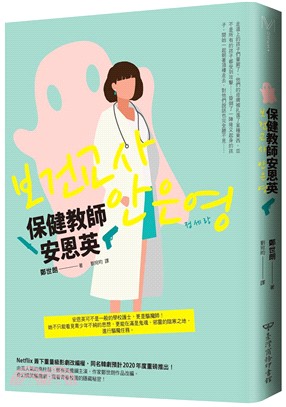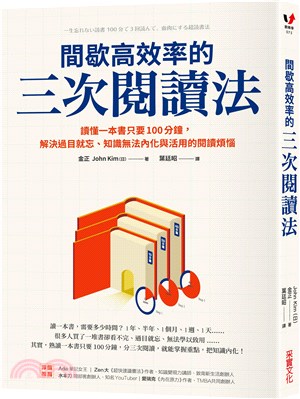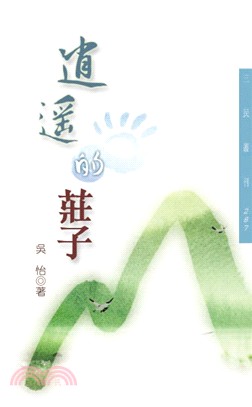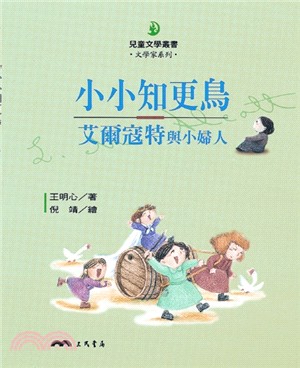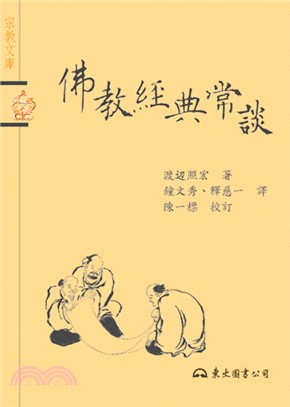隱蔽的空間:寶藏巖地方故事集
- ISBN13:9789869906470
- 替代書名:Hidden Spaces: Local Tales of Treasure Hill
- 出版社:田園城市文化
- 作者:林思駿-作; 張雅筑-繪
- 裝訂/頁數:線裝/320頁
- 規格:21cm*17cm*2cm (高/寬/厚)
- 出版日:2020/12/18
商品簡介
收錄113篇故事揭露你從不知道的寶藏巖
......公館周邊的大學生在吃膩了學校附近餐廳的口味之後,偶爾會來寶村買便當;幾十年前的自來水園區雖然被政府列為軍事重地,但無論是寶藏巖還是公館商圈的孩童們都很愛闖入探險;而同樣和寶藏巖聚落均為法定文化資產的紀州庵,他們的管理者在面對老房子和地方社區的民眾時,又抱持著什麼樣的態度與看法?對於某些在地人來說,寶藏巖可以是老人家周末和牌友打牌的所在,也可以是運動散心的好去處;對於關注文資保存、居住正義和生態環境的地方知識分子而言,寶藏巖更是指標性的存在,它提供了一個讓眾人觀摩學習、反省甚至是批判的場域。
一場以「空間」為題的地方書寫實驗
集結了各式各樣描述寶藏巖的故事與其說是一段漫長村落生活史的修補還原,不如說這樣的文本累積表現出來的其實是一種「情境式」的空間敘述,讀者可以藉由觀看不同人物對於寶藏巖的感受,加上自己的理解與想像,無論他對於寶藏巖是否熟悉,都可以在閱讀《隱蔽的空間》這本書之後,重新建構一套屬於自己的寶藏巖的模樣。
【備註一】本書故事根據真實的口述訪談重新編寫而成,考量受訪者的生活隱私,部分文章當中提到的人物以化名的方式呈現。
【備註二】全書內容中英對照,讓更多外國朋友得以透過故事認識寶藏巖。
各界推薦(按姓氏筆畫排列)
宋世祥_【百工裡的人類學家】創辦人
吳光庭_ 國立成功大學建築系教授
吳秉聲_ 國立成功大學建築學系副教授兼博物館館長
李清志_ 都市偵探、實踐大學建築系副教授
李曉雯_ 台北國際藝術村總監
洪伯邑_ 台大地理環境資源學系副教授
凌宗魁_ 建築文資工作者
陳懷萱_【百工裡的人類學家】共同創辦人
康旻杰_ 台大建築與城鄉研究所副教授
詹智雄_ 寶藏巖文化村協會總幹事
榮芳杰_ 清華大學環境與文化資源學系副教授
作者簡介
文 / 林思駿
台北人。成功大學建築學系史論組碩士班畢業。喜歡旅行、閱讀與速寫,善用精密的建築畫探討城市空間議題。過去作品於大阪、台南、新竹、竹東、台北等地展出,並曾於札幌天神山、淡水竹圍工作室及寶藏巖等地駐村及發表成果。2018年與張雅筑小姐共同成立「在地偏好」工作室,持續進行台灣地方風土研究與創作。
圖 / 張雅筑
在地偏好共同創辦人與視覺設計師。畢業於東海建築系,擅長將城市與建築轉化為平易近人的插畫形式,作品曾獲美國3x3當代插畫獎、國際插畫大賽ijungle Illustration Awards、Taiwan Top Star視覺設計獎優選肯定以及American Illustration (AIAP)、Communication Arts、紐約藝術雜誌《Creative Quarterly》等視覺設計競賽入圍。
關於在地偏好工作室
「在地偏好」是一間承接地方空間調查、視覺設計、插畫創作的工作室。「Topophilia」即為「在地偏好」之意,又可譯為「戀地情結」。 我們擅長將空間特色轉換成不同風格的視覺表現,讓觀者更容易了解並喜歡我們的環境。此外,我們也喜歡進行跨領域的研究與創作,之前曾與台南紅椅頭俱樂部、寶藏巖國際藝術村、捷絲旅西門館、淡水竹圍工作室、清大環境教育中心等單位合作,合作項目含括形象摺頁、藝術創作、主題地圖、課程設計、展覽策畫等多重面向。
序
作者序 | 以空間為題的地方書寫實驗
「隨著我們越來越認識空間,並賦予它價值,一開始渾沌不分的空間就變成了地方。」──段義孚*
2008年的夏天,臺北市立美術館推出一檔令人印象深刻的建築展覽名為「建築實驗室」,展出的圖面與模型與其說是一個個的精緻的建築作品,不如說是眾多藝術家、理論家及建築師們對於建築、城市、身處時代乃至整個人類文明的態度與宣示。由紀.恩斯特.德博(Guy Ernest Debord)在1957年發表的「巴黎心理地理學指南」亦在展覽當中登場。這一幅作品呈現一張支離破碎、令人狐疑的巴黎地圖,一塊塊破碎的街區搭配一連串的箭頭符號被看似隨意地安置在畫面上。這張不知所云的地圖或許會讓觀者感到莫名其妙,然而它卻精確反映出人們認識城市的方式:對於城市的某處我們很可能瞭如指掌,但是對於另一處卻十分陌生。「巴黎心理地理學指南」反映了我們心裡面所認知的城市模樣,那是一種「由想像、主觀與片段式經驗所重組的空間」。(臺北市立美術館,《建築實驗室》)
德博透過這幅作品告訴我們,人們所認知的城市乃由主觀經驗所構成,而人文地理學家段義孚先生在《空間與地方》這本書當中則以舉例的方式更加清楚地說明了上述的觀念:
明尼阿波利斯市(Minneapolis)的常住居民熟悉該市,一位計程車司機可以學會在該市找到自己的路,一名地理學者可能因研究明尼阿波利斯在概念上了解該市,這就是三種不同的經驗。一個人可能既在概念上又在現實上熟悉一個地方。他可以清晰地闡釋思想,但是難以通過觸覺、味覺、嗅覺、聽覺甚至視覺表達他所知道的。
以上德博和段義孚提出的概念,說明了人們口中所熟悉的某個「地方」,其實也是由一連串的片段經驗或記憶碎片所組成。每個人受限於個人的主觀意識,對於地方的認識理解終究有其限度,即便是專職研究地方的專家學者亦然。2018年我們在臺北寶藏巖國際藝術村發起「空間記憶採集計畫」,就是以上述的空間思考當作出發點,以此作出反省與回應。具有法定的文化資產身分,同時身為全台灣知名度極高的藝術村,又或是許多社區爭相觀摩的模範聚落,已有不少學術研究及報告針對「寶藏巖」留下了眾多的文本。許多地方研究通常仰賴所謂的「田野調查」,研究者透過實地接觸聚落當中的人事物,以訪談的方式獲得地方資訊,進一步歸納聚落的歷史、文化、空間等各種資料。然而「田調」通常僅作為研究當中的部分環節,最終研究文本的產生還是多以研究者的論述為主。在空間記憶採集計畫當中,我們思考著,為何不讓聊天過程當中這些「居民告訴我們的故事」成為主角,讓這些「住在地方的地方人」告訴我們「地方的故事」呢?
試想如果把不同人對於寶藏巖空間的片段描述疊合起來,存在於每一個人心中的那幅「破碎的寶藏巖地圖」就有機會因為彼此堆疊、累積而臻於完整,如此一來我們對於該地的認識就可以超脫由某人、某團體所告訴我們的寶藏巖,而是還原成為一個「眾人」的寶藏巖。如果說世界是因為人的理解而存在,那麼經由眾人口中告訴我們的「寶藏巖」是不是也能更趨近這一個地方的真實本質呢?
時空交疊
2018到2020年之間,我們訪問了數十位與寶藏巖有關的人士,有當地的老住戶、藝術村的經營管理人、駐村藝術家、社服工作者、鄰近的商圈店家和其他單位的主管機關等等。採集計畫期間,我們雖然早以預期將從不同的人口中聽到不一樣版本的「寶藏巖」,但訪談過程遠比我們預料的還更為有趣。在聽著不同受訪者講故事的時候,我們就可以明顯發現大家對於地方的認知不只涵蓋了不同的大小空間,大家在描述一個空間時心中預設的「時間點」也不一樣。舉例來說,同樣是新店溪水岸,有的受訪者告訴我們的是小時候在該處玩耍游泳的愉快回憶;另一個受訪者則開心的和我們分享他前陣子在溪邊發現哪些候鳥。進一步地,實際將不同受訪者的「心理地理學地圖」疊合成為一系列的故事之後,我們發現一個地方的集體印象其實是一種將時間、空間彼此纏繞交疊之後而產生的複雜認知。
因此,在整理眾多訪談資料的時候我們很快的發現了一個問題:因為每一個空間的描述時間點都不一樣,整本書的時間軸會因為受訪者的記憶及描述不同而不斷跳躍,看起來似乎會造成一點閱讀理解上的問題,但是換個角度想,這又未嘗不是我們每一個人看待地方的方式呢?認識地方的方式有很多種,我們很可能因為過去經歷了某個特別的事件而愛上一個地方,也很可能在某個地方過著日復一日的平凡生活因而對於該地有一定程度累積的認知解讀。事實上,人對於空間的記憶本來就是從他所經歷的「過去」這個龐大的集合體當中,汲取自己有所印象的片段而已。因此,集結了各式各樣描述寶藏巖的故事與其說是一段漫長村落生活史的修補還原,不如說這樣的文本累積表現出來的其實是一種「情境式」的空間敘述,讀者可以藉由觀看不同人物對於寶藏巖的感受,加上自己的理解與想像,無論他對於寶藏巖是否熟悉,都可以在閱讀這一系列的故事之後,重新建構一套屬於自己的寶藏巖的模樣。
當「空間」作為黏著劑
認識寶藏巖可以有很多種方法,我們可以選擇自由自在的在聚落裡面的開放區域閒逛,也可以報名導覽以特定的路線繞行村落一圈,當然也可以有意無意的路過──騎腳踏車到大草原野餐、休息,口渴到柑仔店買杯酸梅湯,或是就僅僅像那些公館商圈的上班族,騎著自行車「路過」聚落就是每天的生活日常。生而為人的我們因為擁有相同的生理構造,因此即使每一個人會用自己的方式觀看、解讀一個地方,但是對於「空間」的組成依然存在著一定程度的共識,就像寶藏巖村落的居民長期以來將自己的聚落分為「上村」和「下村」,對於熟悉或不熟悉寶藏巖的讀者而言,我們也可以透過一套輕鬆的描述和示意圖了解寶藏巖的空間構成(見本書所提供的故事 / 發生地對照表)。簡而言之,這一個村落的邊界由小觀音山、新店溪和萬盛溪所圍塑,山下是聚落村民主要生活的場所,包括菜園、柑仔店還有聊天休息聚會的「涼棚」,山上則是藝術村主要的管理範圍,包括各式各樣的藝術家工作室和商店。就歷史來看,供奉觀音菩薩的寶藏廟和寶藏塔則是這個聚落最早的空間核心。
本書的故事鋪排則以上述的聚落空間架構作為基礎,我們為所有的故事設定了一個隱形的散步路線:從新店溪水岸出發往聚落行進,沿途經過菜園、涼棚和柑仔店,接著沿著階梯拾級而上經過寶藏廟、藝術村的入口,拜訪一間間工作室、小廣場、老榕樹,最後來到山頂的廣場。這一條散步路線將一個個故事加以串聯,讀完所有的故事也等於在寶藏巖聚落仔仔細細地繞了一遍。我們認為,將一篇篇文章組織串連成為一個連續的空間,其實具有將眾多「發生在不同時間點的故事」錨定下來的作用,如此一來,讀者也能在閱讀過程中逐步掌握聚落的空間結構,進而認識寶藏巖的地方特質。除此之外,故事當中穿插了三篇描述寶藏巖的文章,其中兩篇由藝術家劉星佑、前藝術村營運部副理李明俐撰寫而成,他們將和讀者分享看待寶藏巖的另一種經驗與視角,讓全書的空間視野更加開闊;第三篇文章則是2019年我們在寶藏巖駐村時候留下的日誌記錄。透過「空間」作為一種黏著劑,我們將各式各樣的故事和觀點集結在一起,至於最後寶藏巖到底是什麼樣的一個地方?我們希望能夠交由讀者自行判定解讀。
寶藏巖之外
2019年我們受寶藏巖國際藝術村的邀請,在寶藏巖駐點工作長達四個月。這一次的駐村是2018年「空間記憶採集計畫」的延伸,田野調查的範圍除了包含寶藏巖聚落,更涉及寶藏巖之外的公館商圈、溫羅汀、自來水園區、客家文化園區乃至同安街底的紀州庵等泛稱為「城南」的區域。城南是一個模糊不清的概念,有人說城南指的是牯嶺街所處的區域,也有人說城南範圍更大,包含南機場、金門街廈門街同安街等地方亦屬於該區裡面,韓良露在《台北說城人》當中指的城南則是永康、青田、龍泉街即俗稱「康青龍」一帶的街廓。
以這個各自表述的模糊定義作為前提,我們試著透過採集計畫重新思考,廣義來說同樣位於城南的寶藏巖聚落與周邊的環境究竟構成了什麼樣的空間網絡?在這些居住、生活在寶藏巖之外的人們心中的空間地圖究竟是什麼模樣?經由訪談收集了更多的資料之後,我們發現鄰近聚落的另一大群人依然和寶藏巖保有多重複雜的關係,比如說鄰近的大學生在吃膩了學校附近餐廳的口味之後,偶爾會來寶村買便當;幾十年前的自來水園區雖然被政府列為軍事重地,但無論是寶藏巖還是公館商圈的孩童們都很愛闖入探險;而同樣和寶藏巖聚落均為法定文化資產的紀州庵,他們的管理者在面對老房子和地方社區的民眾時,又抱持著什麼樣的態度與看法?對於某些在地人來說,寶藏巖可以是老人家周末和牌友打牌的所在,也可以是運動散心的好去處;對於關注文資保存、居住正義和生態環境的地方知識分子而言,寶藏巖更是指標性的存在,它提供了一個讓眾人觀摩學習、反省甚至是批判的場域。
隱蔽的空間
在訪談的期間,一位受訪者和我們分享從前他在紀州庵工作後來到寶藏巖開店的經驗,或許帶有一點點敏感體質,他剛到紀州庵和寶藏巖的時候都親身經歷了一些無法解釋的事件。「靈異體驗」多少影響了當時他的生活和腦袋裡正在思考的事情,事後來看,這幾個小事件似乎也對這位受訪者當時正在面臨的一些人生課題帶來轉機。他告訴我們,隨著時間過去,他開始慢慢體會到日常生活、個人理想和地方場所「這三者會形成一種彼此互相黏著很強、又曖昧的連結關係」。如果以一套「可被解釋」的空間術語來說,或許他撞見了的「祂」正是所謂的「場所精神(Genius Loci)」,也就是地方的守護神也說不定*。我們的日常生活、人生理想、興趣喜好是無法脫離空間的,如果抱持著「想要確實了解這裡究竟是什麼樣的一個地方」的信念,那麼一邊試著和人聊天、理解生活在地方的這些人在想些什麼,一邊揪出這些隱蔽在眾人的生活、歷史與記憶背後的「空間」及其衍生而來的故事,或許是一個緩慢但卻十分有效的方式。這是一場以「空間」為題的地方書寫實驗,我們希望透過這一系列的故事,引發讀者對於各種空間的想像,進而重新認識「寶藏巖」三個字背後的地方意涵。
林思駿寫於在地偏好工作室,台北,2020年
*註一:此文句刊載於1977年段義孚的著作《空間與地方:經驗的視角》當中,本書引用的中文版本為王志弘所譯,原文請見《地方:記憶、想像與認同》第16頁。
*註二:Genius Loci臺灣習慣翻譯為場所精神,如果就拉丁文字面的意義來看,Loci代表「地方」,Genius則有「守護靈」之意。
Foreword
Space as subject matter—A local writing experiment
“As we get to know a space and assign values to it, this formerly chaotic space turns into a place.” --Yi-Fu Tuan Yi-Fu Tuan[1]
In the summer of 2008, Taipei Fine Arts Museum curated a remarkable architecture exhibition named Archilab. To be sure, each drawing and model was a delicate piece of work; however, it would be more apt to see them collectively as an expression of mentality and a statement by a great number of artists, theorists and architects toward architecture, city, their eras, and human civilization in general. Guide psychogéographique de Paris, published by Guy Ernest Debord in 1957, was also part of the exhibition. This piece of work presented a broken and perplexing map of Paris. A series of arrows complemented each broken patch of city block, seemingly arranged in a random manner. While this map may seem unintelligible or bewildering to the viewer, it accurately reflects the way people come to know a city: we may know a corner of the city inside out and be a total stranger to another. Guide psychogéographique de Paris reflects the cityscape in our mind--it is "a space reconstituted by one’s imagination, subjective and segmented experience.” (Archilab , Taipei Fine Arts Museum)
Through this piece of work, Debord tells us that people’s perception of a city is constituted by subjective experience. In the book Space and Place by the humanistic geography scholar Yi-Fu Tuan, he further makes clear the foregoing concept by way of an example:
Long-time residents of Minneapolis know the city. A taxi driver can learn to find his way around the city. An academic studying geography may come to know Minneapolis conceptually through his studies. These are three different experiences. One may become familiar with a place conceptually and realistically, and be able to clearly convey his thoughts. Yet, he cannot express what he knows through senses of touch, taste, smell, hearing, or sight.*
*Translator's note: This is a back translation of a Simplified Chinese edition of Tuan’s book.
The concept proposed by Debord and Tuan goes to show that a “place” familiar to people is, in fact, made up of a series of segmented experiences or shards of memory. Limited by subjective consciousness, each person can only know so much of a place. This applies to even professional experts and scholars committed to studying a place. With the foregoing ideas on space as our starting point, in 2018 we launched Project Treasure Hill: Collecting Memories in Taipei Treasure Hill Artist Village as our reflection on and response to those ideas. With the legal status of a cultural heritage and considered one of the most well-known artist villages in Taiwan, Treasure Hill is an exemplar settlement imitated by other communities. A great deal of academic research and reports on Treasure Hill have already produced plenty of writings. A lot of research on places rely on the so-called “field work” method—researchers visit on-site, make contact with people in the community, obtain local information through interviews, and then form generalizations about the settlement’s history, culture, space, among other information. However, such “fieldwork” usually only serves as a part of the research process. The resulting research reports mostly consist of the researcher’s discourse. With Project Treasure Hill: Collecting Memories, we sought to do things differently. We began to think: why not turn the “stories told by the residents”into the main characters, and let these “local residents” tell us their “local stories”?
Imagine putting together different persons’ segmented descriptions of Treasure Hill in an overlapping manner. There is a chance the “broken piece of Treasure Hill’s map” held within each person’s mind will add up, overlap, and gradually form a more complete picture. In this way, our understanding of Treasure Hill can go beyond the telling of a single person or group, and come closer to a restored, “public” version. If the world exists on the basis of human beings’ understanding, then shouldn’t the version of “Treasure Hill” as told by many come closer to touching upon the essence of this place?
Overlapping of time and space
From 2018 to 2020, we have interviewed dozens of people related to Treasure Hill, including long-time residents, managers of the artist village, resident artists, social welfare workers, stores in nearby business districts, and competent authorities of other agencies. For our memory collection project, we anticipated hearing different versions of “Treasure Hill” as told by different people, but the interview process turned out to be far more interesting. Listening to different interviewees tell their stories, we clearly saw how each person’s perception differed from that of another—not just spatially, but temporally. For instance, two different persons both talked about the Xindian Riverbank. One told us of his childhood memory of playing and swimming there, while the other happily shared her discovery of migratory birds by the river the other day. When we compiled and presented a series of stories derived from different interviewees’ “psychological-geographical maps” in an overlapping manner, we discovered that a place’s collective impression in fact comprises complex perceptions resulting from the overlapping of time and space.
We soon found ourselves facing a problem when going through various interview materials: various remarks about each space had been made at different points in time. Therefore, the chronological order of this book will constantly jump back and forth when one gets to different interviewees’ memories and remarks. This may seem to pose a problem for reading comprehension. But, isn’t this just the way we view a place? There are a number of ways to get to know a place. It could be due to a particular event in the past that you’ve come to fall in love with a place. It could be your day-to-day life in a certain place that gradually allows you to deepen your understanding of that place. In fact, a person’s memory of a space comes from this enormous collective entity called “the past” that he’s experienced, and in a recall he only extracts the segment from this entity of which he has an impression. Therefore, the accumulation of a wide range of Treasure Hill stories is not so much a restoration of the village’s extended life history as a “situational” spatial account. Whether familiar with Treasure Hill or not, readers are welcome to tap into their own understanding and imagination when reading about different figures’ feelings for Treasure Hill, and then re-create your own image of Treasure Hill.
When “spaces” connect
There are many ways to acquaint yourself with Treasure Hill. Go and wander about in the open area of the settlement, apply for a guided tour that will take you on a specific route circling the village, or pass by whenever you feel like it. Ride a bike, visit the lawn and have a picnic there. Get a glass of sour prune soup at the community grocery if you’re thirsty. Commute toward Gongguan business district by bike and you’ll “pass by” the village every day. As human beings, we share more or less the same body constitution. Even if each of us has our own way of viewing and understanding a place, we more or less have a consensus on what constitutes a “space.” The villagers of Treasure Hill have long divided the village into “upper” and “lower” parts. Even if you’re not familiar with the village, the spatial composition of Treasure Hill should be easy to grasp if you refer to the accessible descriptions and diagrams we’ve provided. (See “Stories and Where to Find Them.”) In short, the village borders on Little Guanyin Mountain, Xindian River and Wansheng River. The bottom of the mountain is the main living area of the villagers, including the vegetable farm, community grocery and a shed, where people gather, chat and rest. The top of the mountain is the primary area managed by the artist village; various artist studios and shops are located here. From a historical point of view, Treasure Hill Temple (dedicated to Guanyin Bodhisattva) and Treasure Pagoda comprise the earliest core space of the village.
The stories’ sequence follows the aforesaid spatial structure of the village. There is an invisible walking trail extending across all of the stories: with the Xindian Riverbank as the starting point, you move in the direction of the settlement, pass by the vegetable farm, the shed and the community grocery. Up the stairs, you’ll see the Treasure Hill Temple and entrance to the artist village. Visit each studio, the small plaza, the old banyan tree, and eventually arrive at the square on the top of the hill. So the stories are like dots, one connected after another on this walking trail. Reading all of the stories is equivalent to doing a careful round of the settlement. In our opinion, connecting each story and turning it into a linear space has the effect of anchoring the many stories “taking place at different points in time.” Readers will, step by step, be able to grasp the village’s spatial structure as they read along, and discover the village’s local features. Three pieces of writing about Treasure Hill are inserted in between the stories, two of which are written by artist Hsing Yu LIU and former Treasure Hill Artist Village manager Isis Mingli Lee, respectively. They offer their experience and perspective on how to view Treasure Hill, further expanding the spatial horizon of this book. The third piece of writing was the journal entry left during our Treasure Hill residency in 2019. With “spaces” connecting everything, we have put together a wide variety of stories and perspectives. Ultimately, what kind of a place is Treasure Hill? We leave this question’s answer and interpretation up to the readers.
Outside Treasure Hill
Invited by the Treasure Hill Artist Village in 2019, we settled in the village for a period of four months. This opportunity was an extension of the 2018 Project Treasure Hill: Collecting Memories. The scope of the ensuing fieldwork included not only the settlement but places outside it, including Gongguan business district, the “WenRoTing” region, Taipei Water Park, Taipei City Hakka Cultural Park, and as far as Kishu An Forest of Literature located at the end of Tongan St.; territorially, we got involved in what is generally referred to as the “City South” region. The term is vaguely defined. Some say it includes the area where Guling Street is located, while some say it’s far more expansive, spanning Taipei South Airport, Kinmen St., Xiamen St., and Tongan St. Lucille HAN in her book Taipei City Narrator views “City South” as the street blocks reaching from YongkangSt., Qingtian St. to Longquan St. (namely, the so-called “Kang-Qing-Long” region).
With this vague definition as the premise, we proceeded with our project in an attempt to reevaluate the following question: what kind of spatial network do the Treasure Hill settlement and its environs--also part of “City South,” in broader terms--constitute? How do the spatial maps in the minds of people living outside Treasure Hill look like? After we’ve collected more information from interviews, we noted that another large group of people close to the village has maintained multifaceted and complex relationships with Treasure Hill. For example, when university students close by tire of going to restaurants near the school, they sometimes buy bentos in the village. Decades ago, Taipei Water Park was named a military zone. Nonetheless, children living in the village and Gongguan business district had dared to go there for adventures. What kind of mindset and thinking does the management of Kishu An Forest of Literature (also a cultural heritage like the Treasure Hill settlement) adopt when faced with an ancient structure and residents in the community? To some locals, Treasure Hill can be a recreational place for the elderly, for playing mahjong or cards, or for sports or relaxation. To local intellectuals concerned with such issues as preservation of cultural heritage, housing justice and ecological environment, Treasure Hill serves as a model for imitation, learning, reflection, and even critical judgment.
Hidden spaces
During the course of our interviews, an interviewee shared with us his experience of working in Kishu An Forest of Literature and later setting up shop in Treasure Hill. Perhaps he was in some way more sensitive than most--he has had inexplicable experiences in both places when newly arrived. “Supernatural experience” wielded some influence on whatever was going on in his life and mind; in retrospect, he had been dealing with some issues of import in his life, and somehow these minor events turned things around for him. He told us that, with the passing of time, he came to sense how daily life, personal ideals and locality “formed a close and ambiguous relationship.” In the words of one well-versed in theories of space, perhaps the “it” he had encountered was the so-called “Genius Loci”--it might have been the local protector deity. Our daily routines, life’s dreams and hobbies cannot be separated from space[2]. If one truly wishes “to know what kind of a place this is,” then you could try to chat with people and to understand the locals’ way of thinking, and at the same time attempt to capture the “space” and stories derived from it that are hidden behind the life, history and memory of these people. Though a slow process, this method is effective. Our endeavor has been a local writing experiment, with space as its subject matter. With this series of stories, we hope to open up your imagination about all kinds of spaces, and renew your understanding of the local significations of Treasure Hill.
In Topophilia Studio, Taipei, 2020 Lin Szu Chun
[1]Author’s note: Quote comes from Yi-Fu Tuan's 1977 book titled Space and Place: The Perspective of Experience, albeit not in the original wording. I cite a Chinese translation of Place: a Short Introduction (p. 16) translated by CHIH-HUNG WANG and another translator.
[2]Author’s note: Genius loci usually refers to a location's distinctive atmosphere. Literally, “Loci” means “place,” while “Genius” means “protective spirit.”
目次
推薦序Foreword
◾用說故事的方式重現寶藏巖的集體記憶
-李曉雯,寶藏巖國際藝術村總監
◾Recalling Through Storytelling the Collective Memory of Treasure Hill
-Li Hsiao Wen / Director, Treasure Hill Artist Village
◾從場域學習觀察,在場域察覺生活,在生活中認識自己
-榮芳杰,國立清華大學環境與文化資源學系、人文社會學院學士班 合聘副教授
◾Learning from the Site, Perceiving the Site, and Knowing Oneself
-Rong Fang Jay / Associate Professor, National Tsing Hua University Department of Environmental and Cultural Resources, and Interdisciplinary Program of Humanities and Social Sciences
作者序Preface
◾以空間為題的地方書寫實驗
◾Space as subject matter — A local writing experiment
第一部分:寶藏巖 Part I : Treasure Hill
◾79個故事79 stories
◾3篇文章3 essays
◾我願化身寶藏巖的蓮花精靈 ─ 保持距離與好奇心 / 劉星佑
◾Let me turn into Treasure Hill’s “Lotus Elf” ─ Keep your distance & stay curious / Hsing Yu Liu
◾開了燈,照亮誰? / 李明俐
◾When Light Is Turned On, Whom Does It Illuminate? / Isis Mingli Lee
◾那些構成地方的微小事物 / 林思駿
◾The little things that shape the place / Lin Szu Chun
第二部分:寶藏巖之外 Part II : Outside Treasure Hill
◾34 個故事34 stories
後記 Afterword
書摘/試閱
秘密基地 Secret base
往寶藏巖西北處,順著新店溪水岸往下游走,可以找到一個自來水廠排放廢水的出水口,因為水管出水口懸空的關係,流出來的水形成一道弧形的小瀑布,落地之後變成一個小水塘。由於排放的水是製水過程中不要的過濾產物,所以雖然名義上是被拋棄的廢水,但是其實算是相當乾淨。以前的水塘很小沒辦法游泳,但是很適合讓五六個人一起在裡面泡水聊天,水深大概到腰胸以上,當時是村裡小孩子常去的秘密基地。現在從該處附近抬頭望向樹林間,還可以看到隱沒在樹叢花草中的大排水管,以前這裡並沒有自行車道,我們都是依循著大水管的路徑軌跡,穿越一大片雜草叢林才能找到我們的秘密基地。
Head northwest of Treasure Hill and downstream along the Xindian Riverbank, you will find a drainage pipe that’s part of a wastewater treatment plant. Water used to gush forth from the pipe in an arc like a mini waterfall, forming a pond. The discharge contained particles filtered out by the water treatment process. Wastewater in name, it was actually quite clean. The pond was too small for swimming, but it was perfect for a soak and a lively chat with friends, five or six at the most, as water only went as high as the waist or chest. It used to be the favorite secret meeting place of children growing up in the village. These days, you can still see hidden within the bushes numerous rows of pipes. There weren't any bike lanes, so to pass through the jungle of weeds that stood between us and our secret "base," we had to rely on the large pipes for guidance.
生態環境Ecological environment
寶藏巖臨河,從小觀音山、寶藏巖聚落一直到新店溪構成一個豐富多元的生態環 境,只要在河濱走走就可以觀察到好多物種,非常有趣。這裡看得到魚自水面跳 出,也觀察得到新店溪裡面有洄游魚種,只要仔細注意水的變化,還可以感受到溪水的漲退潮。久而久之,我發現在這裡的每一種物種,都有牠們固定棲息的地 方,比如說我知道麻雀的家就在那兩棵樹上,八哥則很喜歡在永福橋下棲居,黑領椋鳥的巢穴則比較靠近福和橋的這一頭,也曾在新店溪看過兩次魚鷹。前陣子 我還注意到不少黃頭鷺在這裡出沒,但是因為它是夏候鳥,過一陣子牠們就會南 飛離開吧。如果中午時分路過福和橋,常常可以發現黑鳶正在頭頂上方盤旋。在聚落裡面,則是白頭翁、麻雀、紅嘴黑鵯、斑鳩和鴿子的地盤,鳥兒每天到處吱吱喳喳好不熱鬧。去年,還有台灣藍鵲飛到我的工作室窗前來吃貓餅乾(因為有一隻叫做噴噴的村貓沒把放在窗前的餅乾吃完!)。除了藍鵲,樹鵲也會來搶食物,有時候它們發現盛放餅乾的大碗裡面居然已經空空如也,牠就站上去,ㄎㄧㄤ的一聲,盤子就翻過來了。感覺好像在抗議:「啊!居然空了,冰的(翻桌的台語)!」
Treasure Hill is located by a river; the area stretching from Little Guanyin Mountain, the Treasure Hill village to Xindian River makes up a diverse ecological environment. Walk along the riverside, and you’ll observe plenty of species. There’s fish jumping out of the water surface, and migratory fish swimming in the Xindian River. You can feel the ebb and flow of the river if you pay attention to shifts in the water. After an extended period of time, I’ve come to learn of each species’ habitat. I know the sparrows make those two trees their home. The Chinese starlings settle in a spot under Yongfu Bridge. The black-collared starlings’ nest is at the side close to Fuhe Bridge. I have seen ospreys twice at Xindian River. Recently I noticed the presence of the yellow-headed herons. They’re a kind of migratory bird that visit in summer, so I think they’ll be flying southwards before long. If you pass by Fuhe Bridge at noon, chances are you will find black kites (Milvus migrans) circling in the air above. The light-vented bulbuls (Pycnonotus sinensis), sparrows, black bulbuls (Hypsipetes leucocephalus), turtle doves and pigeons have made the village their home. Their daily chirping livens up the day. Last year, a Taiwan blue magpie (Urocissa caerulea) flew to the window of my studio for some cat biscuits (actually leftovers, ‘cause a village cat named Purr-purr did not eat them all!). Sometimes the grey treepie comes by for a snack, too, and when it finds the big biscuit bowl empty, it moves to stand on it, and then overturns it with a loud clang, as if protesting "Yo, it's empty! Píng-toh!* "
* In Taiwanese Hokkien, píng-toh means overturning the table, a highly provocative action that suggests anger.
學游泳How I learned to swim
寶藏巖這裡太多好玩的事情了,小時候根本不會跑到公館去(笑)。除了在山上玩捉迷藏、摘水果,去溪邊釣魚抓蝦之外,我們小朋友還會玩游泳跳水,位於新店溪床上方有一兩座高壓電塔,以前我們會爬到電塔的水泥基座上面一躍而下,順著水流再慢慢游回岸邊,興致一來還可以一路游到中正橋,我的游泳技術就是這樣學來的呢!身體隨著溪水順流而下的時候,因為水流湍急,所以人不會一下就沉下去,順著水流調整姿勢和呼吸就好,一緊張起來反而才容易溺水。我也曾經有過在新店溪中央腳抽筋的經驗,那時候我就先沉到水裡,等腳舒服一點之後再浮出水面吸一口氣,接著扳扳腳趾頭就好了,不過有一次是兩腳一起抽筋,碰到這樣的情況,就只能靠雙手慢慢划回岸邊了。
Treasure Hill was a world of fun for me as a kid. I'd never once gone to Gongguan (laughter). Apart from playing hide and seek and picking fruits on the mountain, and fishing and catching shrimps in the river, we also swam and dived. I think a transmission tower was on the Xindian Riverbank, well maybe two. We used to climb up the tower and jump from the concrete foundation, and then slowly swim back to the riverbank with the current. On a whim we would swim all the way to Zhongzheng Bridge. This is basically how I learned to swim. I feel my body moved by the water's current--it's rapid so one doesn't sink right away. All I had to do was adjust my posture and breathe. You only choke on water when you tense up. I had this experience where I got a foot cramp just as I got to the middle of the Xindian River. So what I did was just let myself sink all the way down, and when that particular foot got better I swam up to take a breath. After that I just took some time stretching my cramping toes with my hands. There was this one time when both my feet got cramps. In a situation like this, all I could do was rely on my arms’ swimming strokes to take me back to the shore.
萬盛溪Wansheng River
現在的萬盛溪其實已經改道過了,和以前的位置不太一樣。以前萬盛溪出水口落在福和橋的正下方,溪水也不像現在這麼多,與其說是溪,還不如說是一條很乾淨的水溝。幾十年前我的爺爺在萬盛溪的兩側種菜,有些河段小到一跳就跳過去了,這也是為什麼我們沒有什麼在萬盛溪玩水的記憶,因為它實在太小了。萬盛溪水還乾淨的時候,新店和萬盛兩條溪的匯流處因為魚群很多,因此吸引了非常多的釣客,人多到魚鉤還會彼此打結呢……因為魚被釣到就會跑嘛,跑來跑去把不同人的釣魚線都纏在一起了。除了釣魚之外,萬盛溪口還可以撈蜆仔、抓蝦子和抓毛蟹。我上國中以後,水質慢慢開始改變了,因為萬盛溪上游的工廠多,以前興農路一二段到處都是電鍍工廠或染布工廠,汙水都直接排到這裡,因此當時 的溪水常常在變顏色。漸漸地,魚的種類愈來愈少,只剩下吳郭魚可活。原本萬盛溪和新店溪交會口是魚蝦匯聚之地,後來只剩一層浮油,水髒得可怕。十歲以前,我們還會釣魚來吃,後來就再也不敢了。
The current Wansheng River does not fit the one in my memory—it has meandered and changed. Its outlet was once situated right below Fuhe Bridge, and there wasn’t so much water—it was more of a clean ditch actually. Decades ago my grandpa grew vegetables on both sides of the river; you could cross it by jumping across certain small gaps that existed back then. And so we don’t really have much of a memory of playing at Wansheng River, because it was just tiny. When the water was still clean, you could catch all sorts of fish at the point where Xindian and Wansheng Rivers converged. The crowd of the fishermen was such that fishing hooks often got tangled. I mean, once hooked, the fish gets frantic and moves about wildly, causing a mess of tangled fishing lines. In addition to fishing, clams and crabs were a-plenty for catching at the mouth of Wansheng River. However, things began to change when I got to junior high—the water quality deteriorated. Upstream, more and more factories were being set up: all along Sections 1 and 2 of Rd. were fabric dyeing and electroplating workshops. Contaminated water went directly into Wansheng River—I remember how the water was always shimmering with varying colors. Soon, there was only one kind of fish left to be found: tilapia. The converging point of Wansheng and Xindian Rivers used to teem with fish and shrimp, but before we knew it, nothing was left but a sheen of oil on dreadfully dirty water. Before I was ten, we could catch fish in the river and make a meal out of it. Not anymore.
主題書展
更多主題書展
更多書展本週66折
您曾經瀏覽過的商品
購物須知
為了保護您的權益,「三民網路書店」提供會員七日商品鑑賞期(收到商品為起始日)。
若要辦理退貨,請在商品鑑賞期內寄回,且商品必須是全新狀態與完整包裝(商品、附件、發票、隨貨贈品等)否則恕不接受退貨。




























